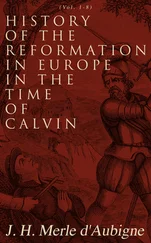Heinrich Graetz - History of the Jews, Vol. 3 (of 6)
Здесь есть возможность читать онлайн «Heinrich Graetz - History of the Jews, Vol. 3 (of 6)» — ознакомительный отрывок электронной книги совершенно бесплатно, а после прочтения отрывка купить полную версию. В некоторых случаях можно слушать аудио, скачать через торрент в формате fb2 и присутствует краткое содержание. Жанр: История, foreign_antique, foreign_prose, на английском языке. Описание произведения, (предисловие) а так же отзывы посетителей доступны на портале библиотеки ЛибКат.
- Название:History of the Jews, Vol. 3 (of 6)
- Автор:
- Жанр:
- Год:неизвестен
- ISBN:нет данных
- Рейтинг книги:3 / 5. Голосов: 1
-
Избранное:Добавить в избранное
- Отзывы:
-
Ваша оценка:
- 60
- 1
- 2
- 3
- 4
- 5
History of the Jews, Vol. 3 (of 6): краткое содержание, описание и аннотация
Предлагаем к чтению аннотацию, описание, краткое содержание или предисловие (зависит от того, что написал сам автор книги «History of the Jews, Vol. 3 (of 6)»). Если вы не нашли необходимую информацию о книге — напишите в комментариях, мы постараемся отыскать её.
History of the Jews, Vol. 3 (of 6) — читать онлайн ознакомительный отрывок
Ниже представлен текст книги, разбитый по страницам. Система сохранения места последней прочитанной страницы, позволяет с удобством читать онлайн бесплатно книгу «History of the Jews, Vol. 3 (of 6)», без необходимости каждый раз заново искать на чём Вы остановились. Поставьте закладку, и сможете в любой момент перейти на страницу, на которой закончили чтение.
Интервал:
Закладка:
Sisebut's rigorous laws against the Jews lasted no longer than his reign. They were repealed by his successor, Swintila, a just and liberal monarch, whom the oppressed named the "father of his country." The exiled Jews returned to their native land, and the proselytes reverted to Judaism (621–631). In spite of their baptism the Jewish converts had not abandoned their religion. The act of baptism was deemed sufficient at this period, and no one inquired whether the converts still retained their former customs and usages. The noble king Swintila was, however, dethroned by a conspiracy of nobles and the clergy, and a docile tool, Sisenand by name, raised to his place. Under this monarch the clergy again acquired the ascendancy. Once again, at the Council of Toledo (633), the Jews became the object of synodal attention. At the head of this council stood Isidore, archbishop of Hispalis (Seville), a well-informed and equitable prelate, but infected with the prejudices of his time. The synod proclaimed the principle that the Jews ought not to be made to embrace Christianity by violence and threats of punishment; nevertheless Reccared's laws against them were re-enacted. The full severity of the ecclesiastical legislation was, however, directed against the Jews who had been forcibly converted under Sisebut, and had reverted to their religion. Although the clergy themselves had criticized the method of their conversion, they nevertheless considered it a duty to keep within the pale of Christianity the Jews that had once received the holy sacrament, "in order that the faith may not be dishonored." Religion was regarded at this period merely as a lip-confession. The synod which sat under Sisenand decided, therefore, that the Jews who had been baptized should be forcibly restrained from the observance of their religion, and withdrawn from the society of their co-religionists, and that the children of both sexes should be torn from their parents and thrust into monasteries. Those discovered observing the Sabbath and the Jewish festivals, contracting marriages according to the Jewish rites, practising circumcision, or abstaining from certain foods, in obedience to the precepts of Judaism, were to expiate their offenses by forfeiting their freedom. They were to be reduced to slavery, and presented to orthodox Christians chosen by the king. According to this canonical legislation, the forcibly converted Jews and their descendants were not to be admitted as witnesses, because "those that have been untrue to God cannot be sincere to man"; this was the conclusion reached by ignorance in session. In comparison with this severity, the treatment of the Jews that had remained steadfast to their faith appears quite merciful.
Even these, however, the clergy exerted themselves to alienate from Judaism. Isidore of Seville wrote two books against the Jews, wherein he attempted to prove the doctrines of Christianity by means of passages from the Old Testament, naturally in that tasteless, senseless manner which had been employed since the commencement of the polemic warfare against Judaism by the Fathers. The Spanish Jews, in order to confirm themselves in their ancestral faith, were induced to take up the controversy, and to refute this specious proof. The learned men among them replied with counter treatises, written probably in Latin. Their superior knowledge of the Biblical records made their victory easy. In answer to the principal rejoinder, that the scepter had departed from Judah, and that the Christians, who possessed kings, thus formed the true people of Israel, the Jews pointed to a Jewish kingdom in the extreme East, which they asserted was ruled over by a descendant of David. They alluded to the Jewish-Himyarite empire in southern Arabia, but this was governed by a dynasty which had been converted to Judaism.
These resolutions of the fourth Council of Toledo and Sisenand's persecution of the Jewish converts do not appear to have been carried out with all the proposed severity. The Visigothic-Spanish nobles took the Jews more and more under their patronage, and against them the royal authority was powerless. At this period, however, a king resembling Sisebut ascended the Visigothic throne. Chintila assembled a general council, and not only did he obtain from them a confirmation of all anti-Jewish clauses contained in the existing laws, but enacted that no one should be allowed to remain in the Visigothic empire who did not embrace the Catholic religion. The ecclesiastical assembly adopted these propositions with joy, and exulted over the fact that "by the piety of the king, the unyielding infidelity of the Jews would at last be destroyed." They appended the canonical law, that in future every king, before his accession, should be compelled to take a solemn oath not to allow the converted Jews to violate the Catholic faith, nor to favor their unbelief, but strictly to enforce the ecclesiastical decisions against them (638).
A second time the Jews were obliged to emigrate, and the converts, who still clung to Judaism in their secret hearts, were compelled to sign a confession to the effect that they would observe and obey the Catholic religion without reserve. But the confession thus signed by men whose sacred convictions were outraged, was not and could not be sincere. They hoped steadfastly for better times, when they might be able to throw off the mask, and the elective constitution of the Visigothic empire soon made this possible. The present situation lasted only during the four years of Chintila's reign (638–642).
CHAPTER III.
THE JEWS OF THE ARABIAN PENINSULA
Happy condition of the Jews in Arabia – Traditions as to their original settlements – Yathrib and Chaibar – The Jewish-Arabic tribes – The Benu-Nadhir, the Benu-Kuraiza, and Benu-Bachdal – The Benu-Kainukaa – The Jews of Yemen – Their power and influence – Conversion of Arabian tribes to Judaism – Abu-Kariba the first Jewish-Himyarite king – Zorah Dhu-Nowas – Samuel Ibn-Adija – Mahomet – His indebtedness to Judaism – Mahomet's early friendliness to the Jews and subsequent breach with them – His attacks on the Jewish tribes – The War of the Fosse – The position of the Jews under the Caliphs.
Wearied with contemplating the miserable plight of the Jews in their ancient home and in the countries of Europe, and fatigued by the constant sight of fanatical oppression, the eyes of the observer rest with gladness upon their situation in the Arabian peninsula. Here the sons of Judah were free to raise their heads, and did not need to look about them with fear and humiliation, lest the ecclesiastical wrath be discharged upon them, or the secular power overwhelm them. Here they were not shut out from the paths of honor, nor excluded from the privileges of the state, but, untrammeled, were allowed to develop their powers in the midst of a free, simple, and talented people, to show their manly courage, to compete for the gifts of fame, and with practised hand to measure swords with their antagonists. Instead of bearing the yoke, the Jews were not infrequently the leaders of the Arabian tribes. Their intellectual superiority constituted them a power, and they concluded offensive and defensive alliances, and carried on feuds. Besides the sword and the lance, however, they handled the ploughshare and the lyre, and in the end became the teachers of the Arabian nation. The history of the Jews of Arabia in the century which precedes Mahomet's appearance, and during the period of his activity, forms a glorious page in the annals of the Jews.
The first immigration of Jewish families into the free peninsula is buried in misty tradition. According to one account, the Israelites sent by Joshua to fight the Amalekites settled in the city of Yathrib (afterwards Medina), and in the province of Chaibar; according to another, the Israelite warriors, under Saul, who had spared the beautiful young son of the Amalekite king, and had been repudiated by the nation for their disobedience, returned to the Hejas (northern Arabia), and settled there. An Israelite colony is also supposed to have been formed in northern Arabia during the reign of David. It is possible that under the powerful kings of Judah, seafaring Israelites, who navigated the Red Sea on their way to Ophir – the land of gold – established trading stations, for the trade with India, in Mariba and Sanaa (Usal), the most important commercial towns of southern Arabia (Yemen, Himyara, Sabea), and planted Jewish colonies there. The later Arabian Jews said, however, that they had heard from their forefathers that many Jewish fugitives had escaped to northern Arabia on the destruction of the First Temple by Nebuchadnezzar. But there can be no doubt that the persecution of the Jews by the Romans was the means of establishing a Jewish population in the Arabian peninsula. The death-defying zealots who, after the destruction of the Second Temple, fled in part to Egypt and to Cyrene, in order to continue there the desperate struggle against the thraldom of Rome, also passed in straggling bands into Arabia, where they were not compelled to hide their love of freedom or to abandon their warlike bearing.
Читать дальшеИнтервал:
Закладка:
Похожие книги на «History of the Jews, Vol. 3 (of 6)»
Представляем Вашему вниманию похожие книги на «History of the Jews, Vol. 3 (of 6)» списком для выбора. Мы отобрали схожую по названию и смыслу литературу в надежде предоставить читателям больше вариантов отыскать новые, интересные, ещё непрочитанные произведения.
Обсуждение, отзывы о книге «History of the Jews, Vol. 3 (of 6)» и просто собственные мнения читателей. Оставьте ваши комментарии, напишите, что Вы думаете о произведении, его смысле или главных героях. Укажите что конкретно понравилось, а что нет, и почему Вы так считаете.












